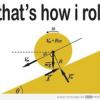Corning Museum of Glass pt. 1
A few weeks back, I went to the Corning Museum of Glass, somewhere I have been meaning to go. I had never been there before, and although the car ride was rather long, it was well worth the trip! On top of the many exhibits, there were multitude of presentations given by the museum staff on the science of glass. Since I went to a few of these demos, I will write a few different posts on each of these topics.
The first one we went to see was on the science of the structure of the glass and how it impacts the way it shatters. The instructor started off by heating a typical glass cup in one area, and placing it in a polariscope, which showed the places on the glass where the glass was experiencing stress. Stress is where the glass is weak, and the heated area of the glass was the most stressed. After, he heated evenly in a ring all around the glass, and when he tapped the glass, it cleanly broke at that point. This was because the ring was where the glass was the most stressed.
Different types of glass are heated differently and made out of different materials in order to change the stress of the glass, and therefore change its strength. Typical window glass, or annealed glass, is thick, and while the heating of the glass is somewhat even, it is not nearly as precise as other types of glass, making it shatter easily upon impact. Also, since there is irregularity in the placement of the stress, the glass shatters into random fragments, as one can see when a window is broken by a baseball or in a robbery. Tempered glass is a stronger type of glass, also known as safety glass, where the heating and cooling process is much more regulated. The glass is heated evenly, but then cooled rapidly (in a matter of seconds). How does this create strength? The outer surface of the glass cools much faster than the inside, and as the center of the glass cools, it tries to pull away from the outer surface; this creates tension on the inside, while the outer surfaces compresses with great strength. Compressed glass is much stronger than glass in tension since compressed glass resists breaking apart.
Car windshields are another application where the glass used needs to have extra strength. However, this type of glass is different. Upon impact, the glass in a windshield shatters, but stays in place. In severe impacts, like a head to the windshield or a bullet, it even appears as if there is a solid in the glass. How can this be? Windshield glass is actually two pieces of tempered glass with a piece of plastic laminated between them. The layering affect makes the glass strong, while the plastic in between prevents glass fragments from flying and injuring those in the accident.
It’s crazy how much heat can affect the strength of glass! One mishap with cooling can change a durable piece of tempered glass into glass which easily shatters. The product of that day at the Corning Museum of Glass was a new knowledge of how glass shatters and a lot of broken glass! Soon to come is more of my trip to Corning! Until next time, Fizzix community, until next time.




1 Comment
Recommended Comments